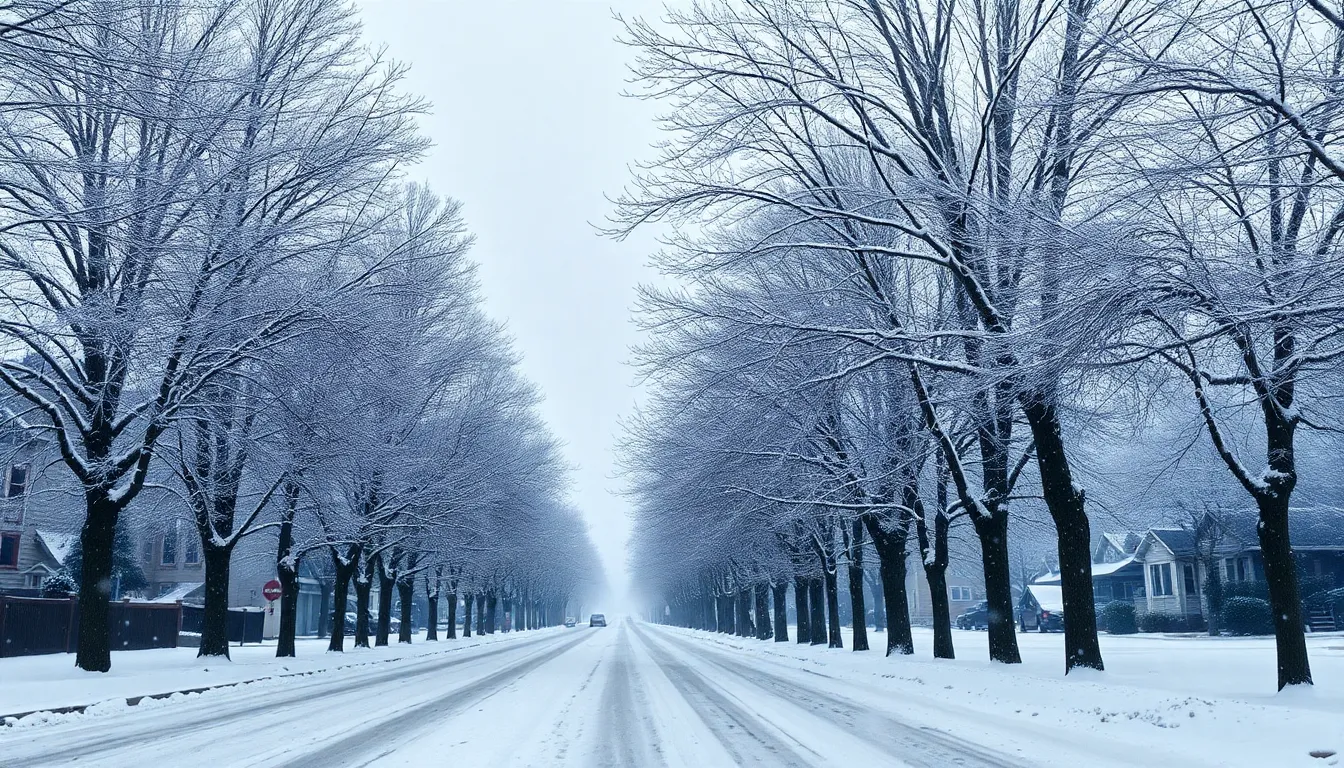As winter approaches, many people eagerly track the weather, especially when snow is in the forecast. Knowing how many inches of snow to expect can make a big difference in planning daily activities, from commuting to outdoor fun. This Thursday, the anticipation builds as meteorologists predict snowfall that could impact the region.
With varying forecasts and models, it’s essential to stay informed about the latest updates. Whether it’s a light dusting or a significant accumulation, understanding the expected snowfall can help everyone prepare accordingly. Dive into the details of this week’s snow predictions and find out just how much snow to expect on Thursday.
Table of Contents
ToggleOverview of Snow Forecasts
Current forecasts predict varying snowfall amounts for Thursday, with estimates ranging from 2 to 8 inches, depending on specific locations. Meteorologists use advanced models to analyze atmospheric conditions, leading to these projections.
Factors Influencing Snow Accumulation
- Temperature: Colder temperatures typically increase snow density, impacting total accumulation.
- Moisture Levels: Higher humidity can enhance snowfall amounts, contributing to heavier accumulation.
- Wind Patterns: Wind can shift snow distribution, leading to localized heavy or light snowfall.
Regional Forecasts
| Region | Expected Snowfall (inches) |
|---|---|
| Northeastern US | 4 – 6 |
| Midwest | 2 – 4 |
| Southeastern US | 1 – 3 |
| Mountain Areas | 6 – 8 |
Staying updated with forecasts through reliable weather services is crucial as conditions can change rapidly. Heeding alerts will help in making timely decisions regarding travel and safety during snowfall events.
Factors Influencing Snow Accumulation

Snow accumulation depends on several key factors, including temperature, precipitation intensity, and wind patterns. Understanding these elements provides clarity on how much snow might cover the ground.
Temperature Variations
Temperature plays a crucial role in determining whether precipitation falls as snow or rain. Snow typically forms when temperatures are at or below 32°F (0°C). If surface temperatures rise above this threshold, snow may melt before reaching the ground, resulting in lower accumulation. Additionally, warmer air can limit the snow’s ability to accumulate effectively. For instance, a forecasted temperature of 30°F allows for more substantial snow accumulation than a temperature of 35°F.
Precipitation Intensity
Precipitation intensity also significantly influences snow accumulation. Heavier snowfall results in greater accumulation as snowflakes have less time to compact on the ground. For example, light snow, which may fall at a rate of less than 0.5 inches per hour, often leads to minimal accumulation, while moderate to heavy snow can exceed 1 inch per hour, enhancing overall snow depth. Areas experiencing intense snowfall at lower temperatures tend to accumulate more snow than regions with light, intermittent precipitation.
Regional Snow Accumulation Predictions
Forecasters predict varying snowfall amounts across different regions for Thursday. Understanding these regional predictions aids in planning and preparedness.
Northern Regions
The Northern regions can expect substantial snow accumulation. Predicted snowfall amounts range from 4 to 6 inches. Locations such as Upstate New York and northern Michigan are likely to experience the higher end of this range due to colder temperatures and moisture-rich systems. Meteorologists expect that wind patterns may enhance snow accumulation in these areas, particularly near the Great Lakes.
Southern Regions
The Southern regions anticipate lighter snowfall compared to their northern counterparts. Forecasts estimate 1 to 3 inches of snow, primarily affecting areas like southern Virginia and the Carolinas. These regions may experience icy conditions instead of substantial snowfall, as temperatures rise closer to freezing levels. Factors such as varying precipitation types—mixing rain and snow—can further influence overall snow accumulation in the South.
Historical Snow Data for Thursdays
Historical snow data reveals patterns in snowfall for Thursdays in different regions. Analyzing past records provides insights into typical snowfall amounts and the variability depending on geographic location and climate conditions.
Northeastern US
Northeastern states, particularly in winter, see substantial snow accumulation on Thursdays. Data shows an average of 5 inches of snow during January Thursdays over the last decade. Notable examples include:
| Year | Snowfall (inches) | Location |
|---|---|---|
| 2018 | 8 | Upstate New York |
| 2019 | 6 | Massachusetts |
| 2020 | 4 | Pennsylvania |
| 2021 | 5 | New Jersey |
| 2022 | 7 | Connecticut |
Midwest
Midwestern states often record moderate snowfall. Historical averages indicate about 3 inches on Thursdays during February.
| Year | Snowfall (inches) | Location |
|---|---|---|
| 2018 | 3 | Wisconsin |
| 2019 | 2 | Illinois |
| 2020 | 4 | Michigan |
| 2021 | 2 | Minnesota |
| 2022 | 5 | Ohio |
Southeastern US
The Southeastern US experiences lighter snowfall amounts. Average Thursday snowfall during winter months typically ranges from 1 to 2 inches, with implications for travel safety.
| Year | Snowfall (inches) | Location |
|---|---|---|
| 2018 | 1 | South Carolina |
| 2019 | 0.5 | Georgia |
| 2020 | 2 | Virginia |
| 2021 | 1 | North Carolina |
| 2022 | 1.5 | Alabama |
Mountain Regions
Mountain regions frequently encounter heavier snow on Thursdays, particularly during January and February. Data reflects snowfall averaging 6 to 10 inches.
| Year | Snowfall (inches) | Location |
|---|---|---|
| 2018 | 10 | Colorado Rockies |
| 2019 | 8 | Sierra Nevada |
| 2020 | 9 | Wasatch Range |
| 2021 | 6 | Tetons |
| 2022 | 12 | Cascades |
Understanding historical snowfall patterns helps individuals anticipate future weather events and make informed decisions regarding travel and outdoor activities. Keeping track of these trends allows for better preparation during significant snowfall forecasts.
Tracking snowfall is essential for planning winter activities and ensuring safety. With Thursday’s forecast showing varying amounts across regions it’s crucial to stay updated. Whether it’s 2 inches in the Southeast or up to 8 inches in the mountains, knowing what to expect helps individuals make informed decisions.
As conditions can change quickly staying connected to reliable weather sources is key. This way, everyone can prepare accordingly for the winter weather ahead and enjoy the beauty of snow while navigating its challenges.




